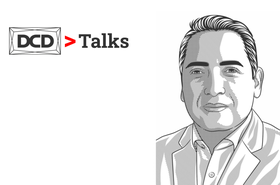Already subject to stringent regulatory requirements, financial services companies may soon have to comply with greenhouse gas (GHG) emissions disclosure rules being implemented in various countries, including the United States, United Kingdom, European Union (EU) members, China, and Australia. The rules would place significant pressure on the financial sector, especially publicly traded companies, to implement and manage sustainability strategies.
Much of the activity around sustainability focuses on the data center, energy management, and digital infrastructure. Investments in these areas help lower energy consumption and costs and improve management of business and cyber threats to ensure business resiliency. As discussed in a recent webinar about the financial sector, businesses need full visibility across their digital infrastructure including Edge computing sites.
For companies to achieve the desired outcomes, stakeholders across financial services organizations need to be on the same page. This starts at the top, with the CIO, CFO, and Chief Sustainability Officer (CSO) working together toward the common goals of running a sustainable, secure, and resilient business.
IT/OT infrastructure optimization
Like other industries, the financial sector is still dealing with the aftermath of COVID-19. Organizations are trying to figure out how to manage a hybrid workforce and what to do with a surplus of office space created by work-from-home practices.
At the same time, financial services organizations need to optimize their digital infrastructure to connect IT and OT systems for a full view of the entire infrastructure. On the building management side, this means deploying sensors and connectivity solutions to collect and analyze data from systems such as chilled water plants, circuit breakers and mechanical equipment. The data delivers insights that enable businesses to manage systems more efficiently to reduce energy and operational costs.
As they endeavor to make these improvements, organizations are getting some help from hardware and energy systems manufacturers, who are producing more efficient products that generate less waste. Combined with investments in renewable energy sources, efficient equipment helps organizations meet sustainability goals and comply with the upcoming disclosure regulations on greenhouse gas emissions.
Examples include amendments now under consideration in the EU for a sustainable finance framework. In the United States, the Securities and Exchange Commission (SEC) is working to finalize disclosure rules regarding “indirect emissions from purchased electricity” and certain types of emissions “from upstream and downstream activities in its value chain.” And the Australian government is considering a mandatory climate change-related disclosure rules for large businesses and financial institutions.
IT infrastructure modernization
Data center modernization through connectivity and improved visibility is also key to implementing sustainability strategies for financial services companies. IT environments increasingly operate as a hybrid infrastructure with applications dispersed through on-premise, cloud, and edge computing locations.
Companies need visibility into the different parts of their IT infrastructure to extract data insights that inspire operational improvements, innovation, speed to market, and customer experience enhancements.
In the financial sector, data centers handle technologies for hundreds of lines of businesses. As such, the data center operates like a colocation facility. It handles the different aspects of the business while also accommodating technology growth and adapting to new demands related to business innovation, sustainability, and cybersecurity. The IT infrastructure must also be resilient, so companies can continue operating even when unexpected events such as power outages occur.
Stakeholder cooperation
As with any other endeavor, efforts to improve sustainability, security, and resiliency are more likely to succeed when all stakeholders work together. For instance, true sustainability cannot be achieved simply because the marketing team has built a message around it. There needs to be substance behind it, and it needs to be built in harmony by stakeholders.
For that to happen, CSOs have to share their sustainability vision with CIOs and CFOs. Together, they can decide what investments to make, how to execute the vision, and then build a marketing message. As they do so, it’s important to remember sustainability isn’t just about regulations. It also impacts the health and well-being of the business.
Access webinar on a more digital and sustainable financial world
Learn more about how the financial services sector can achieve sustainability, security, and resiliency by watching the DCD Fireside chat: Transformation in a More Digital & Sustainable Finance World.





